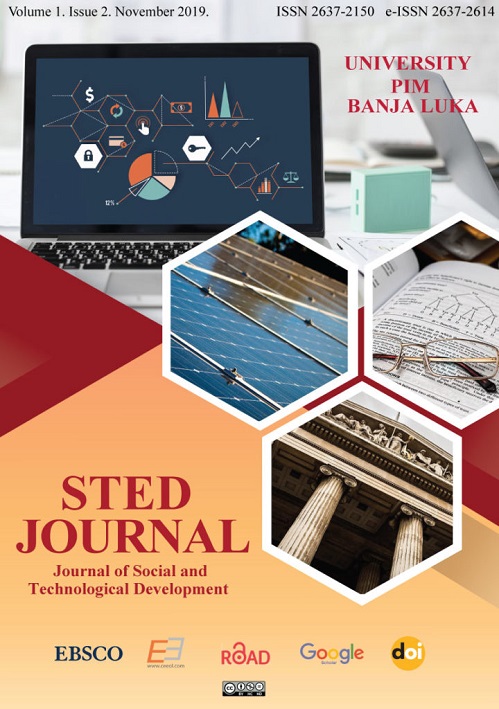THE EFFECTS OF MODIFIED CLAY ON CONTROLLED DRUG RELEASE SYSTEMS
DOI:
https://doi.org/10.7251/STED1902001LAbstract
Recently, controlled drug release systems have been garnering a lot of attention, due to more targeted and effective approach for delivering drugs to a specific tissue. Because of a specific structure and natural abundance, clays are being added to those systems in order to increase its efficiency and minimize costs. In this study, controlled release kinetics of the drug active substance 5-Fluorouracil was studied, using halloysite clay/polymer drug carriers. For this purpose, the halloysite clay was initially modified with cetyltrimethyl ammonium bromide (CTAB). Drug carriers were prepared by adding modified halloysite clays in the mixtures of polyvinyl alcohol (PVA) and sodium alginate. Firstly, the swelling behaviour of the prepared substances was studied in buffer solutions at different pH. The drug release kinetics from the drug carriers, loaded with 5- Fluorouracil, was observed under a UV-spectrophotometer at 266 nm. Release profiles of the active substance were obtained by studying its release in buffer solutions at different pH. The results showed that the prepared drug carriers with modified halloysite clay were suitable for carrying and releasing of the 5-Fluorouracil.

